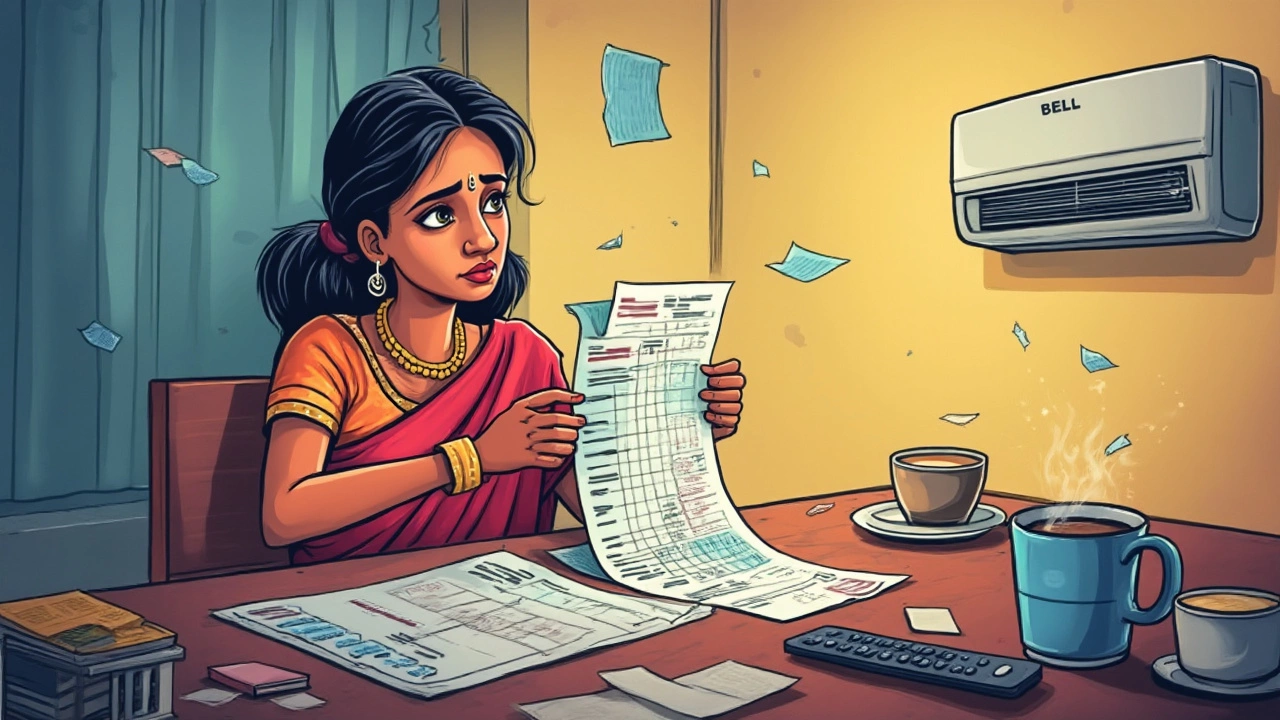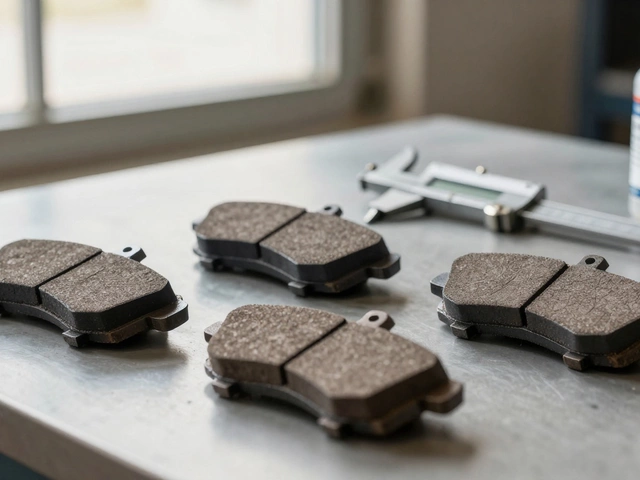If your AC air filter is overdue for a swap, it won't just cost you a cool breeze—your lungs and wallet will feel it, too. Most folks don’t think about the filter until the air starts smelling musty or the electric bill creeps up. But here’s the thing: a dirty filter can sneak up on you fast. Clogged filters make your AC work overtime, push dust back into the house, and even leave you with odd sniffles or headaches.
You don’t need any fancy tools or a technician to spot when your air filter's gone bad. You just need a sharp eye and maybe a flashlight. Give the filter a peek each month. If it’s gray and caked with stuff you can’t recognize, that’s a red flag. A filter in good shape is more off-white or light gray, never fuzzy or dark. And if the airflow feels weak even though your AC is pumping, that’s another dead giveaway.
And here’s a straight-up tip: make it a habit to check during allergy season or if you’ve just gotten over a dust storm, home reno, or even a wild pet-shedding week. Sometimes, that’s all it takes for a clean filter to go bad in just a couple of weeks.
- Why Air Filters Matter
- Obvious Signs Your Filter is Bad
- DIY Ways to Check Your Filter
- Risks of Ignoring a Dirty Filter
- Smart Tips for Staying Ahead
Why Air Filters Matter
People often overlook their AC air filters, but these little screens do more than just keep dust off the fan. They’re the first and main line of defense between your home’s air and all the gunk floating around outside or piling up inside. The ac air filter traps particles like dust, pollen, pet hair, and even mold spores. Without a good filter, all that stuff ends up in your lungs and all over your home.
Every time your AC kicks on, the air filter is working hard to clean up the air before it’s cooled and blown back into your living space. If the filter’s clogged up, airflow drops and your whole system strains to do its job. That means your energy bill goes up, the AC wears out faster, and the air gets stuffy or smells off.
Check out what some common filters actually catch in the table below:
| Particle Type | Estimated Size | Stopped by Air Filter? |
|---|---|---|
| Dust | 0.1–100 microns | Yes |
| Pollen | 10–100 microns | Yes |
| Pet Dander | 2.5–10 microns | Most |
| Mold Spores | 3–40 microns | Usually |
| Bacteria | 0.3–2 microns | High-end filters only |
According to the U.S. Department of Energy, a clean filter can lower your AC’s energy use by up to 15%. That’s a solid chunk of change when you add up summer cooling costs. Even more important, if you or anyone in your house has allergies, asthma, or breathing issues, swapping out a nasty filter is one of the easiest ways to keep the air healthier.
Obvious Signs Your Filter is Bad
If you’ve got an ac air filter that’s clogged, your entire cooling system starts to act up. The first thing most people notice is weird airflow. Maybe one room feels like a freezer and the next doesn’t cool down at all. If you put your hand up to a vent and the air feels weak or faint, the filter could be the villain.
Odd smells are another dead giveaway. A bad filter can’t trap mold spores, pet dander, and odors, so you might smell something funky or stale whenever your AC clicks on. Sometimes, it’s a musty scent, which usually means there’s moisture hanging around in the filter material—prime real estate for mold growth.
Keep an eye out for dust around your vents or on furniture near them. If your filter’s not pulling its weight, your AC just circulates dust right back into your living space. You might also spot more dust floating in sunbeams, especially if you haven’t vacuumed like your mother-in-law is visiting. Sneezing more than usual? A dirty filter is probably kicking up every allergen it was supposed to catch.
Here’s a classic sign—utility bills going up for no clear reason. When the filter gets packed with grime, the AC works much harder and uses more power, so your next bill might look ridiculous for the same amount of cooling. That’s often the first hint for folks who don’t regularly check their filters.
- Rooms cooling unevenly
- Weak airflow at the vents
- Unusual or musty odors whenever the AC runs
- Dustier furniture or vents than usual
- Mysteriously higher electricity bills
If you notice any of these problems, don’t just ignore it—check your air filter. Swapping it out takes all of five minutes and keeps your AC, and your air, a lot healthier.

DIY Ways to Check Your Filter
Checking an AC air filter isn’t rocket science and doesn’t need any special gear. If you can manage a screwdriver and a flashlight, you've got this. First up: always shut off your AC before poking around. You don’t want dust flying or your system running while you pull the filter out.
- Find the Filter. The most common spots are behind a return air grille (that vent on your wall or ceiling) or right inside your AC unit. If you’re not sure, your owner’s manual (or a quick YouTube search) will clear things up in seconds.
- Spot Check the Color and Dust. Pull out the filter and hold it up to a light. If you can barely see light through it, or it’s looking darker than the back of your TV, it’s time for a new one. Good filters should be off-white, not dark gray or brown, and definitely not furry.
- Feel for Clogs. Sometimes, filters don’t look bad but they’re clogged with fine dust. Give it a gentle tap—if a cloud of dust comes off, you’re overdue for a swap.
- Smell Test. If you sniff near the filter and catch a whiff of something musty or odd, it’s a sign things are building up. That stuff’s getting pushed into your air.
- Check the Calendar. If it's been longer than three months—or just one month if you have pets or live in a dusty area—don't overthink it. Just change it out.
Here's a quick data table to help you know when to check or replace:
| Home Situation | How Often to Check | When to Replace |
|---|---|---|
| No pets, normal area | Every 2 months | Every 3 months |
| Pets or smoke | Every month | Every 1-2 months |
| Allergy season | Every month | Every 1-2 months |
| After renovation/dust event | Right after | If dirty, immediately |
Don’t forget, a bad ac air filter can turn your whole system sluggish and drive up bills. If you make it a habit to check each month, you’ll run into fewer breakdowns and keep your home air crisp and clean.
Risks of Ignoring a Dirty Filter
Leaving a dirty AC air filter in place does more than make your home dusty; it actually messes with your whole system. When dirt piles up, your AC unit has to work harder to pull in air. That strain can make parts break faster and send your energy bills way higher than normal. According to the Department of Energy, replacing a clogged filter can lower your AC’s energy use by 5% to 15%—not exactly pocket change if you’re running your unit all summer.
There’s also the gross-out factor. Letting your filter clog means it can’t trap things like pollen, dander, and mold spores. Those get blown right back into the rooms where you breathe and sleep, which can be rough for allergies or asthma. If you notice you’re sneezing or coughing more, that dirty filter could easily be why. Plus, everything from pet hair to dust mites can start to build up all over your stuff.
Worse yet, ignoring the ac air filter for too long can cause the AC’s evaporator coils to ice up. Ice on the coils leads to leaks and sometimes a fried compressor, which is usually the priciest part to repair. If you catch a spike in your electric bill, or your system blows warm air, it’s a good bet your filter’s choking up the works.
- Increased electric bills due to clogged airflow
- Shortened lifespan for your AC unit and its parts
- Poor indoor air quality that can lead to allergies
- Risk of mold growth inside the ductwork
- Costly repairs from overworked equipment
The bottom line? Skipping regular filter checks turns a cheap fix into expensive headaches—for your health, your comfort, and your bank account.

Smart Tips for Staying Ahead
If you want to avoid all the hassle of a bad air filter, make it part of your regular routine to check and swap them out before problems show up. Most AC pros agree: change your filter every 1-3 months, but if you’ve got pets, allergies, or live somewhere dusty, don’t push your luck—aim for that one-month mark.
Forgetting is easy, so set a reminder on your phone, or use sticky notes where you’ll see them. Some newer thermostats even have a feature that pings you when it’s time for a change. Out of sight, out of mind doesn’t work here. A clean filter keeps your ac air filter doing its job so your unit doesn’t eat up energy or blow dust everywhere.
If you want to know how big a difference this makes, check out these numbers:
| Condition | Typical Filter Lifespan | AC Efficiency Drop |
|---|---|---|
| No pets, mild use | Up to 90 days | 10% |
| One pet, normal use | 60 days | 15% |
| Multiple pets or allergies | 30 days | Up to 20% |
If you keep waking up stuffy or see a spike in your power bill, don’t just blame the weather. Filters work harder or wear out way faster when houses get dusty or crowded. Try these quick moves to stay on top of it:
- Mark change dates on a calendar, or use your phone’s reminders.
- Stock up on extra filters during sales so you don’t run out when you need one.
- Check the filter monthly, not just when you feel something’s off.
- If your filter comes out looking real bad before your set replacement time, switch brands or consider a higher-efficiency type (like HEPA or pleated filters).
- If you live in an apartment or rental, ask your landlord who’s responsible for filter changes—don’t just assume it’ll get done.
A tiny bit of planning with your air filters saves a lot of sweat, sick days, and surprise bills.











Write a comment